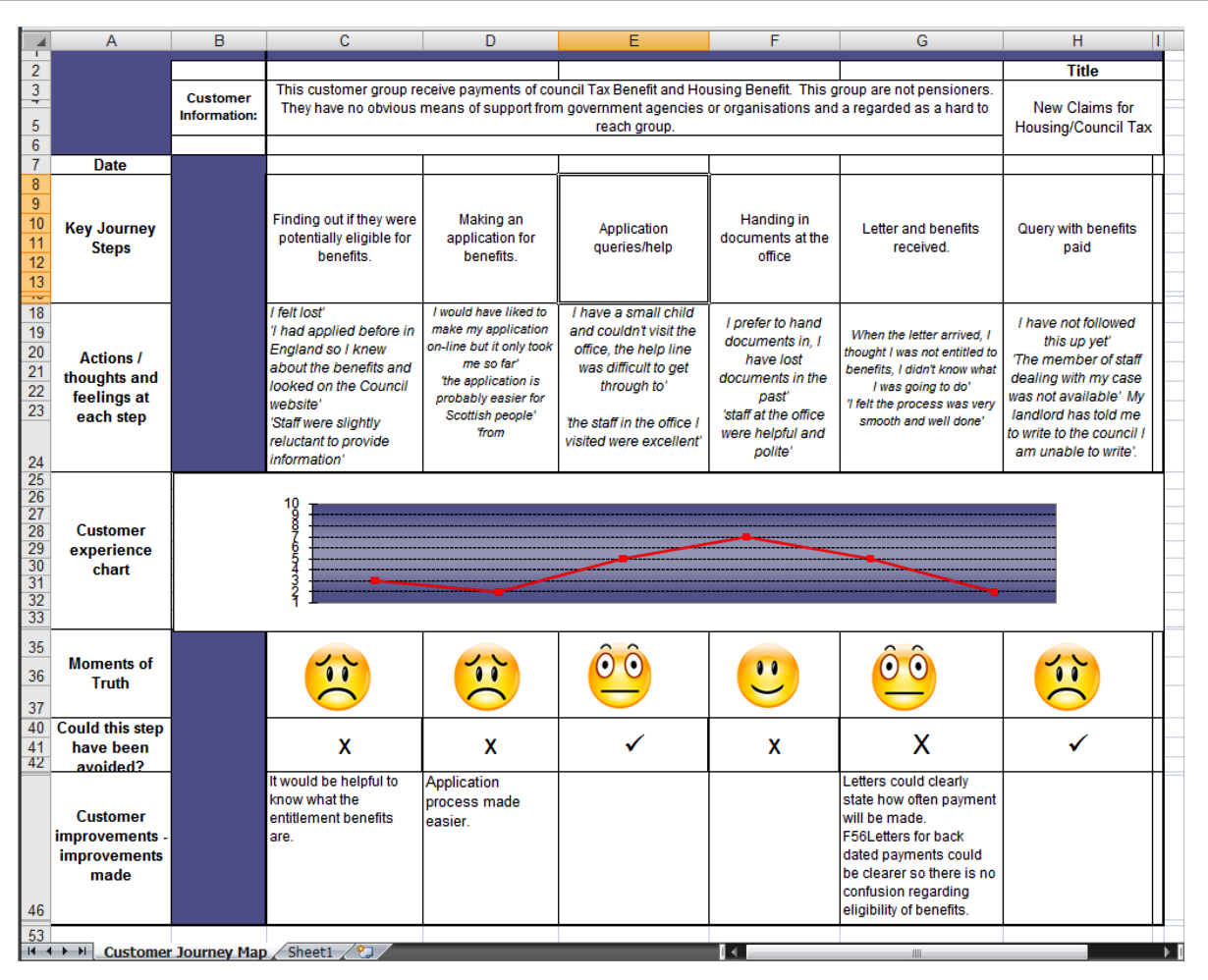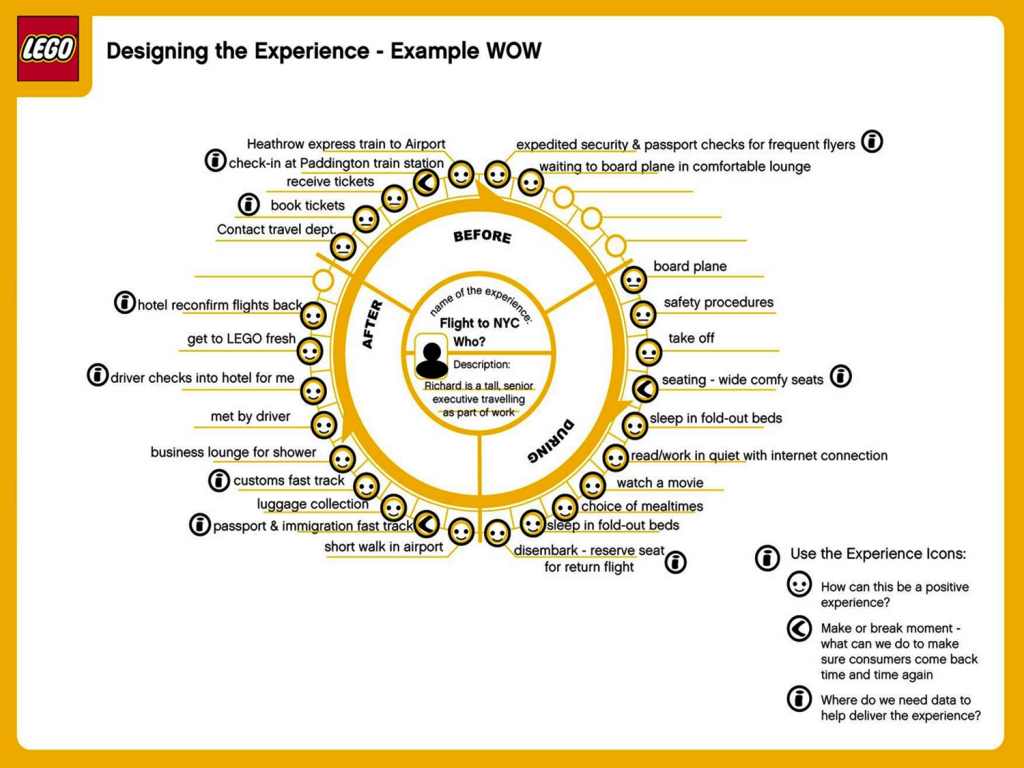If you have not printed this page out, please do so now and review it before preceding.
Customer Journey Canvas from the book, This is Service Design Thinking
Value Streams differ from the more traditional approaches found in other Value Stream Mapping Processes. Its primary focus is not the discovery of waste but of process improvement with a very specific strategic intent, delivery of superior value for the execution of an organization‘s value proposition. This means that the focus of the analysis must be on those Value Streams and processes within those Value Streams that have the most substantial impact on the most important value drivers. These are the drivers that customers are telling you create value.
The Value Stream Map (Current State) points out those critical value delivery processes as they currently exist. The map then provides the Value Stream Mapping Team with the template to redesign the value delivery process to:
- Increase the responsiveness of the system
- Enhance its value delivery capacity
- Deliver greater customer quality at a reduced cost to the organization.
The key to effective Value Stream Mapping is in mapping the right processes, identifying all process linkages to key customer contacts, making dramatic improvements on key customer benefits, eliminating only those costs that don‘t contribute to outstanding value delivery, and monitoring the impact of those improvements on your market-perceived value proposition. These are only achievable if the analysis is driven by your customer value information. The effects of superior value delivery manifest themselves in a number of different ways. Superior value deliverers can leverage their value position to:
- Increase share of the customer
- Increase market share
- Increase goodwill
- Improve cross selling efforts and results
- Avoid the trap of price competition
- Increase profitability
- Decrease operating costs
- Enhance word of mouth
- Decrease negotiation and bidding of customers
I create my journey maps by hand and transfer them to an Excel spreadsheet for sharing electronically. There more sophisticated software tools that have been used for this purpose but most of them distract from the learning experience. I encourage using no more than a pad, pencil, different sizes and colors of sticky notes and the worksheets throughout the remainder of this course.
Review this slide presentation on the Lean Marketing Game. It will assist you in completing the Customer Journey Map.
The Customer Journey Map defines the Service Period (Service Journey, Experiences) as described on Customer Journey Canvas (This is Service Design Thinking). In Lean terms, we have mapped the current state and defined the current flow.
This action should be completed for each Service Product that you have defined. I would recommend working with an existing process so the steps of PDCA can be readily applied in future lessons. Do not try to get too granular at this time. The missing steps can be applied later.
Complete the Trilogy Customer journey Map and go to the next page; Lean/Implement
Recommended Reading/Listening:
Examples and related information located in this blog post,
|
Using Value Stream Mapping |
||
|
Check out this Lean Journey |
||
|
Applying Value Stream Concepts |
Additional Information:
In Lean Service Design, you will utilize a Value Stream Mapping process on a project by project basis but it is typically limited to an internal process. It is a difficult correlation for customer facing experiences. The preferred method of mapping the customer experience is through a journey map. I prefer two styles, one a basic Excel Template that is very similar to a typical Swim Lane chart commonly used in Lean.
From Smart Cities – A guide to using Customer Journey Mapping
Another is circular method demonstrated by the Lego Wheel. Lego uses tool called a ‘customer experience wheel’ to map an existing experience. “We understand what is and what is not important to the customer in that experience and then we design a ‘wow’ experience to improve it.” Though I like the wheel better I have not found a program that could make it easy for me to draw and distribute.
The advantage of creating this map utilizing the Excel template is that you can easily add notes and drill down further down into a process by adding columns and rows.
Complete the Trilogy Customer journey Map and go to the next page; Lean/Implement


